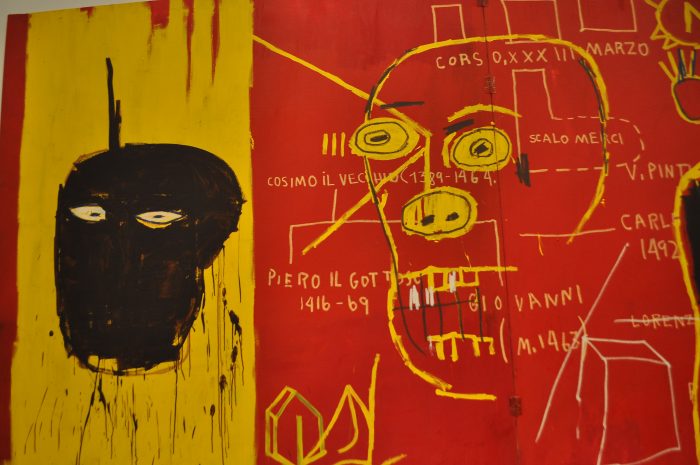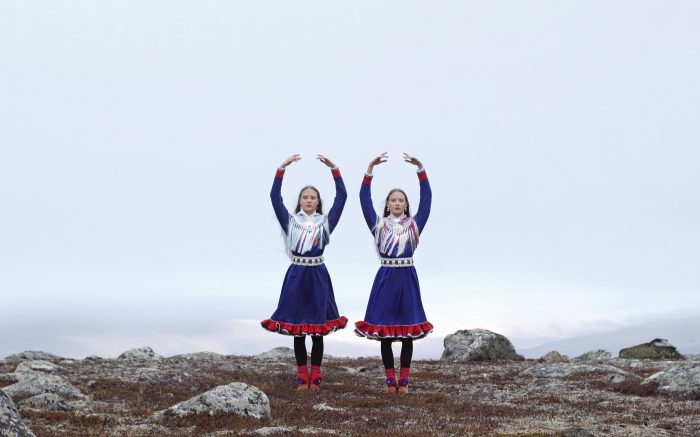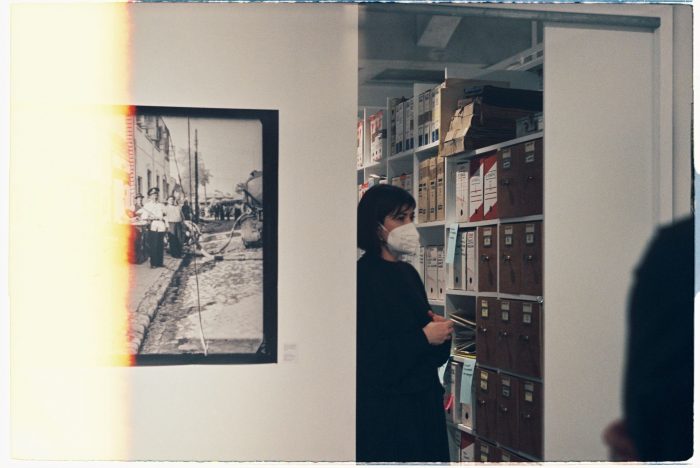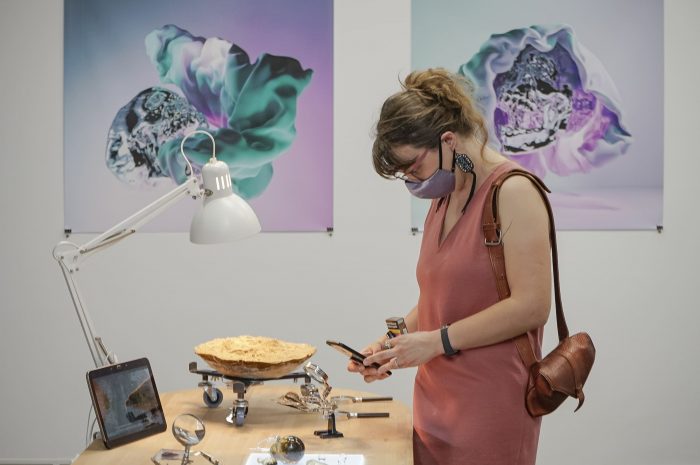Routes and archeological works through memory | Timisoara European Capital of Culture
Posted by Raluca Turcanasu on / 0 Comments
Timișoara (Temeswar), April 2023.
Timisoara greeted me with a few rainy days at the beginning of April, which were nevertheless perfect for exploring the exhibitions within Timișoara European Capital of Culture. Rainy and cold, the city shined brighter than last year.
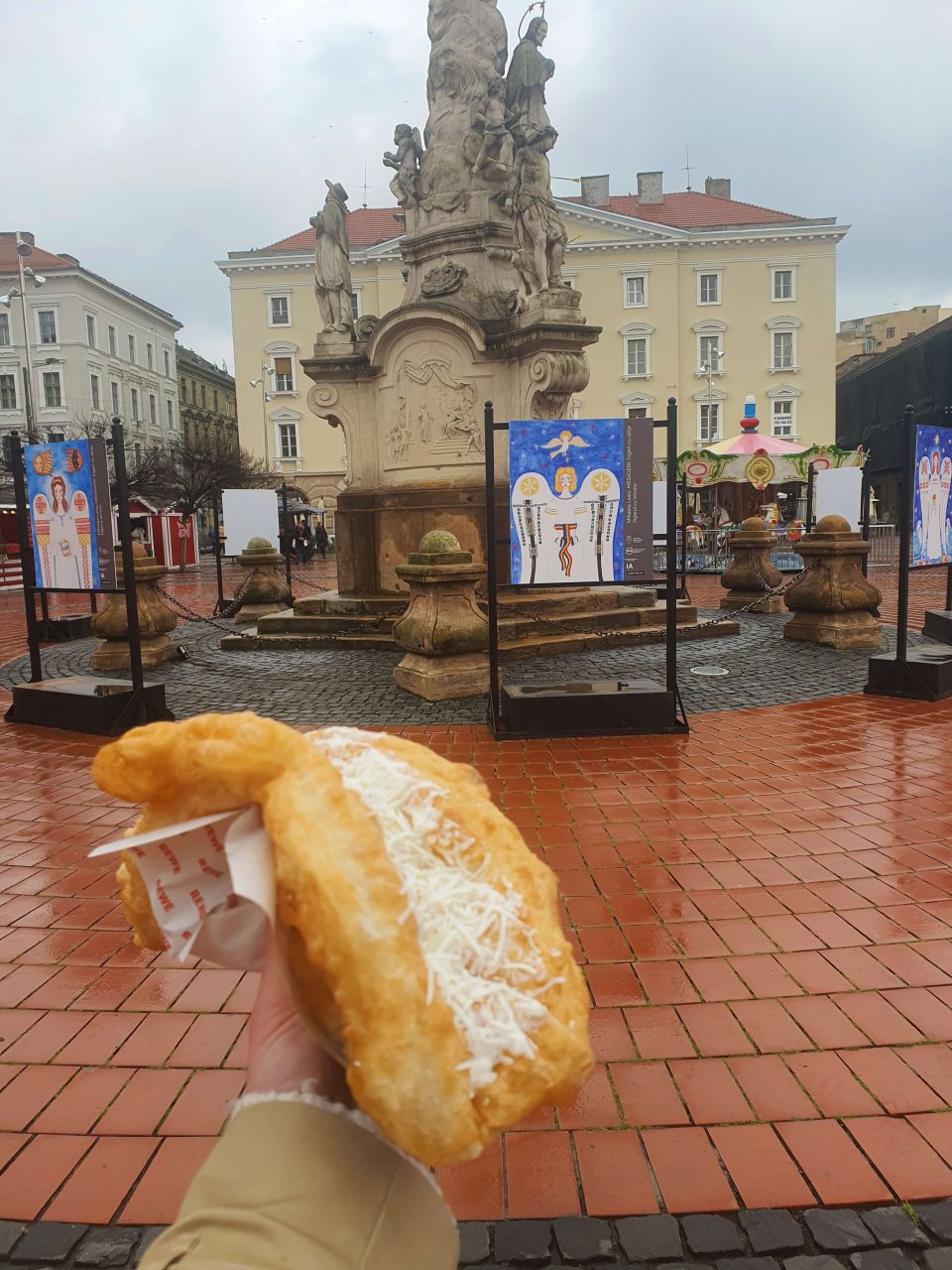
Langos in the Liberty Square
As one might expect, some of the projects within the Capital of Culture status caused some public turmoil. For instance, the festivities were opened by Taraf de Caliu, internationally renowned rroma fiddlers invited to TEDx and awarded the BBC World Music Award in 2022. Although the nationalistic voices’ famous chorus ” we had options among our musicians, too” came with no delay and little surprise, the public appreciated partaking in a musical show which they would have otherwise not experienced.
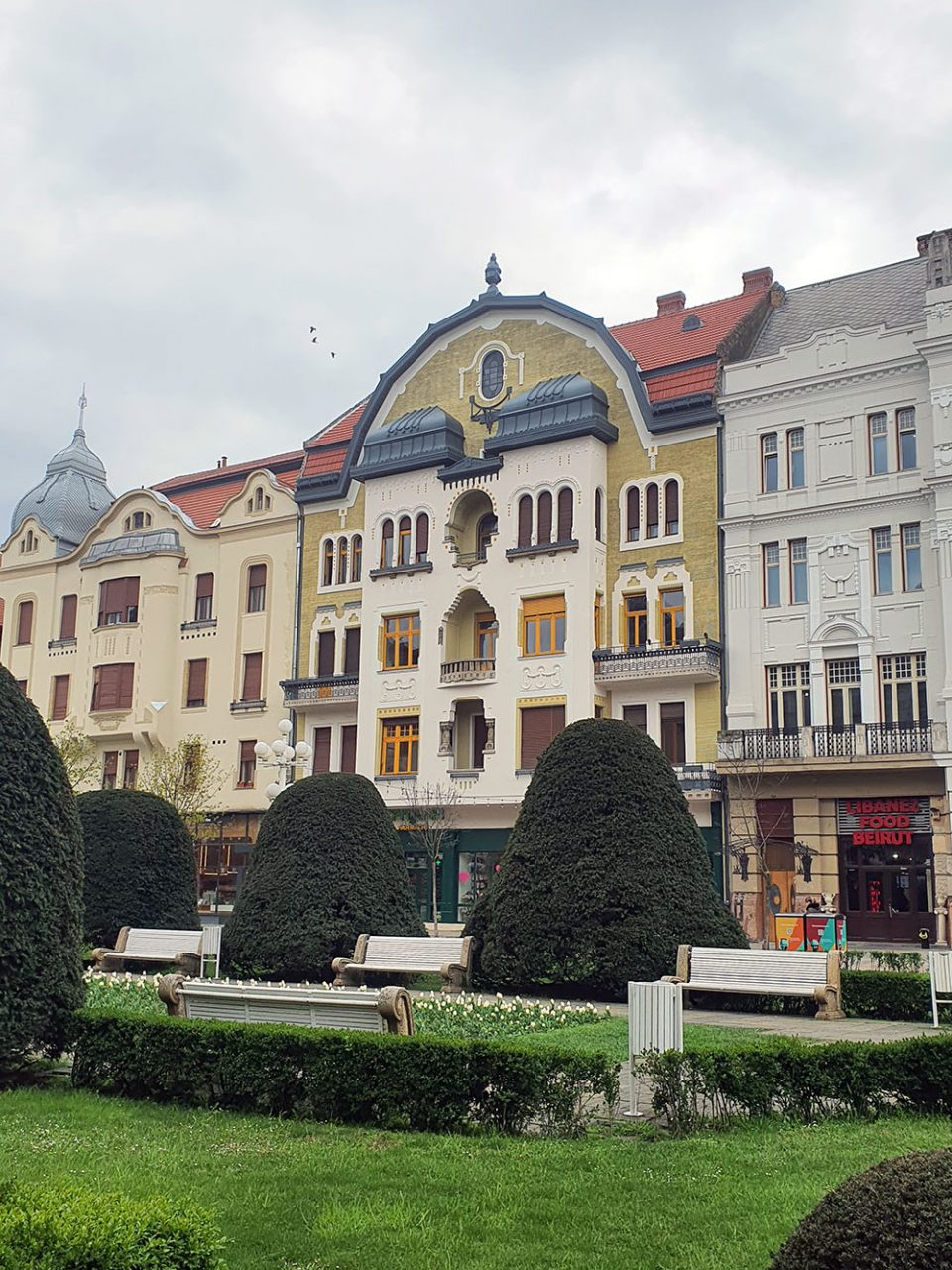
It’s “peculiar” to keep coming back to the you-us dichotomy, even more so in a border city like Timisoara, that has undergone so many rulers, Ottoman, Habsburgic, Hungarian, and especially nowadays, while growing as an international IT hub, and, there you go, this year’s European Capital of Culture. The omnipresent identity-construction mechanism of “us”, of the majoritarian is that “outside invented by the rhetoric of modernity in the creation process of its own interiority” [1] – defining identity through negative differentiation compared to another group. But it’s exactly for such reasons that projects like those under the umbrella of Timisoara European Capital of Culture are so needed: being exposed to various art works and through art education and mediation, to facilitate understanding and interrogating the artistic discourse – at times quite cryptic – the mass audience has the opportunity to nuance their options, to smooth out their equivocal opinions and to discover the charming multitude of “us” and “you” amidst “Us” and “You”.
Next to you and us are “All alone” and “I always think of him”[2]
I re-encountered Mircea Nicolae (Ionuț Cioană) in the (former) Garrison and I had the feeling he would have liked to be exhibited there. I found the curatorial concept of Salonul de Proiecte a “complete”, “round” one – a minimal exhibition in a sort of a ruin of a building, composing a full resolution image of his artistic ethos. I was also glad that the Garrison is still used for art projects (let’s hope that from 2024 we’ll see it renovated too?).
I was both happy and sad because, most probably, Ionuț didn’t realize how many “all by myself”[3] we are out there, how many of us navigate the sometimes murky sometimes fast waters of the transition mindset, young adults born a little before or a little after 1989, in a permanent come-and-go in and outside Romania.
All of us ‘all by myself’ people who, unable to coagulate a more vehement “us”, would wish for an otherwise, but here we have it as such [4].
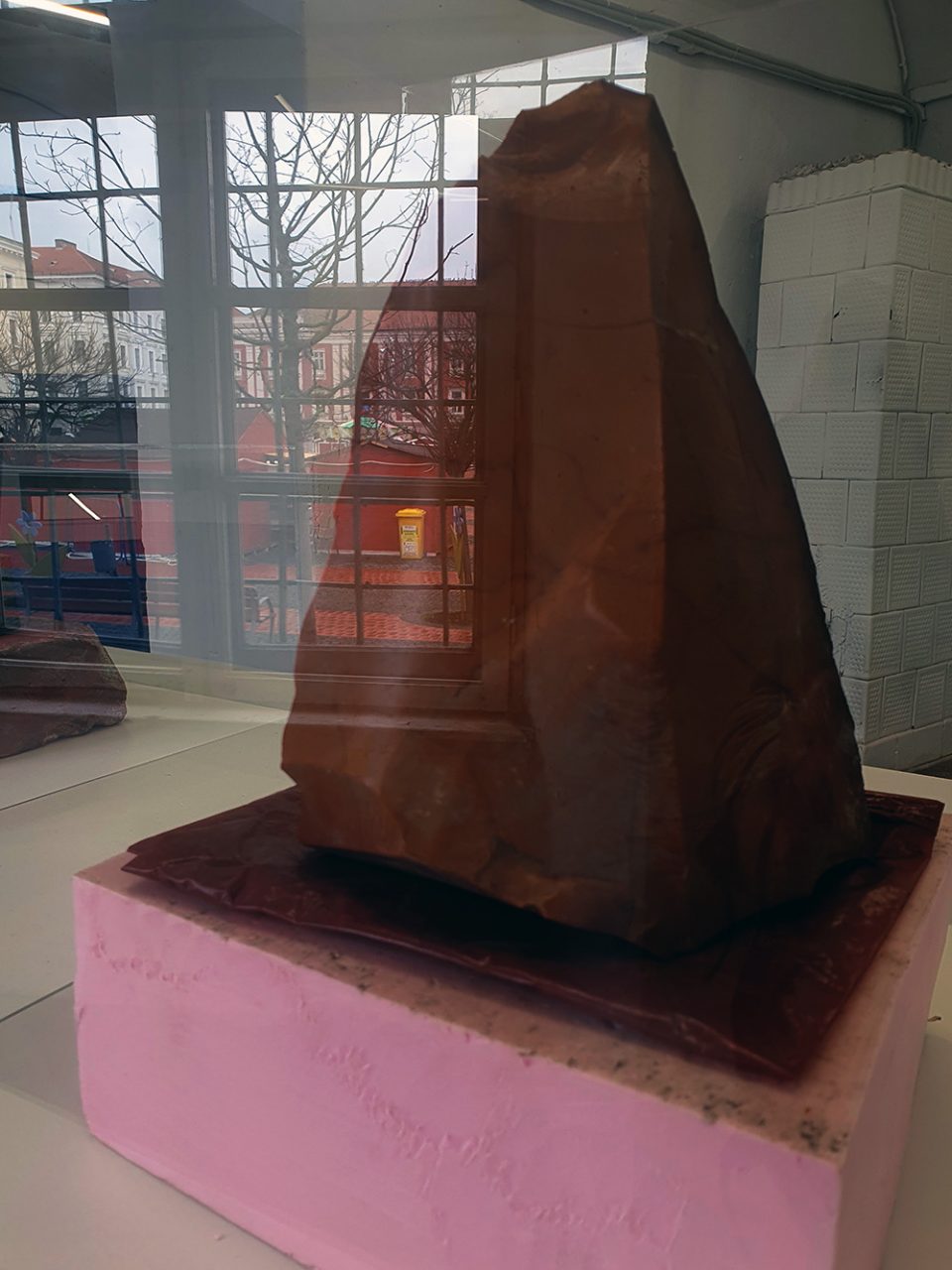
Mircea Nicolae gathers discarded, flawed and useless objects, “time vestiges” and builds them prosthetics, places them on a shrine. I feel it as a gesture of total empathy, with which I, too, relate with: offering crutches to those who can’t walk, trying to patch up even the “useless” ones. For example, brick fragments next to colourful styrofoam, lumps of glue and broken glass are arranged next to commercial debris: plastic bags, Christmas decoration wrappings and so on. Besides a therapeutic dimension, Nicolae’s gesture makes me think of the Marxist concept of “original accumulation”, those capital accumulation processes before the industrial revolution, as well as those of the industrial revolution itself; the expression retains a nuance of the Biblical sin, according to Mignolo (wanting too much? Not being able to refrain oneself?). However, the objects gathered by Niculae represent, practically, the marginalized of this accumulation – production system, that unnecessary and maybe disturbing surplus, that the artist safeguards with the the same care as if he were saving a living being
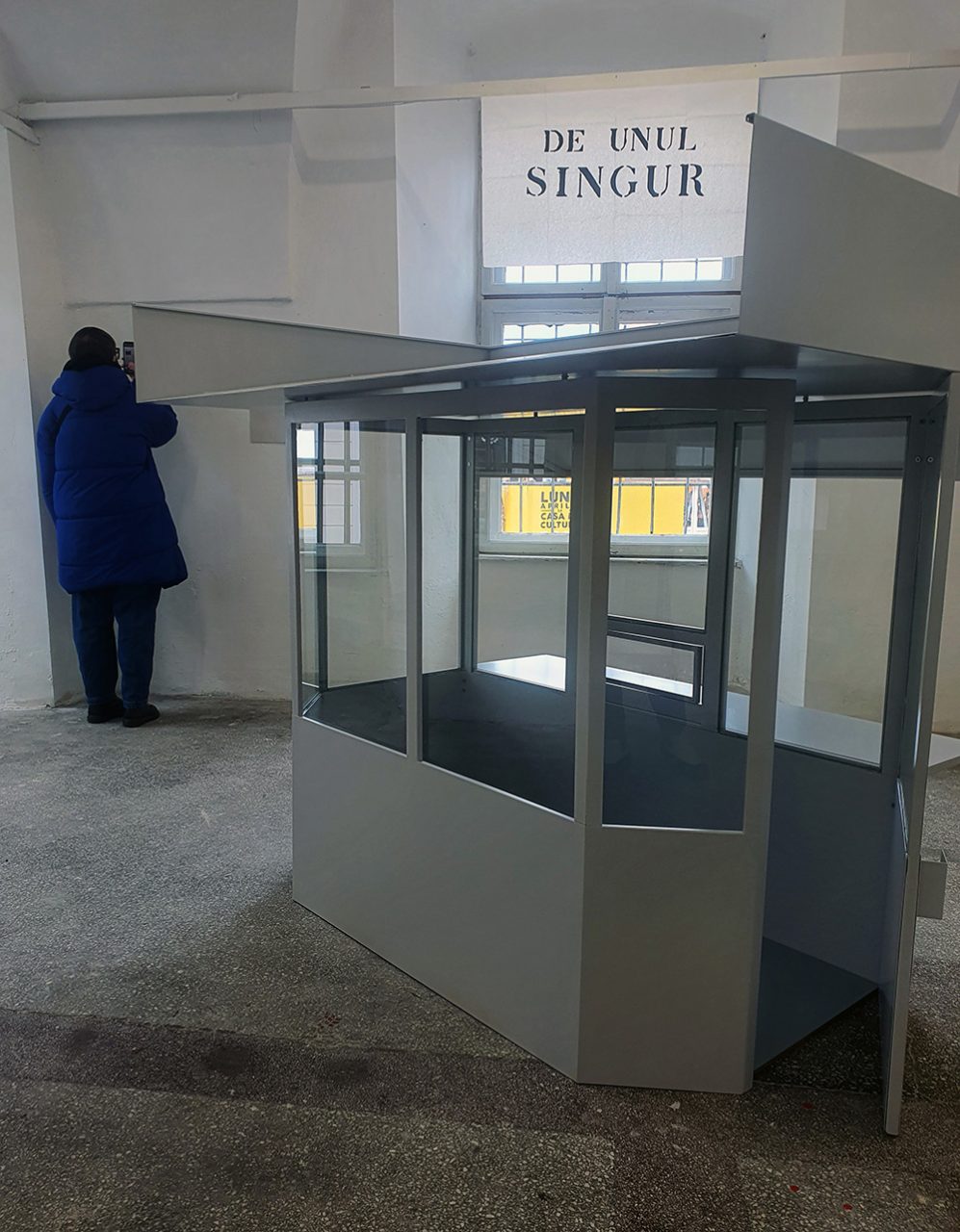
It feels like a silent shout of “this one deserves attention too”. One learns from the curatorial statement that, for Mircea Nicolae combining these materials functioned on three layers: a psychological one (he would see the assemblage as a calming process, that would bring mental space); a religious one (the week is seen as a cycle that transforms existence, outside of individual control); a formal one (the artist is interested in the aesthetic potential of the ordinary, the humble, the modest). “For him, the sequence of the days of the week is tied to signs and symbols of the cosmic cycle of the Hindu mysticism and of alchemic tables, codifying chemical, cosmic and psychic transformations” [5].
I was, however, even more impressed by his archeological documentary: “Romanian Kiosk Company”, 2010, 55 minutes. It follows the history of the street kiosks his father used to design and produce in parallel to the ending of Romanian communism and through the 90s, the becoming (or, perhaps, unbecoming) of the family versus the becoming of the public space, portrayed initially as cheerful, warm, then ambitious, exploring, to, towards the end, closed, defeated. The journey from the personal to the public, from home to outside, from old photographs to static videos is invigorating and sends the viewer, willingly or not, to introspection, to revisiting one’s own urban and personal histories. Of course, it remains a matter of personal interpretation on how cities, or Bucharest in particular, have been developing and the way in which the apparent spatial uniformization (which led to the going under of the family kiosk company) has improved, or not, the urban quality. Among such frames about the city and the others, we hear Ionuț growing lonely, with mycotic-growing thoughts, to suicidal ideation [6]. And we close our eyes and tell ourselves to look closer to those around, those still here, to listen to them more actively, and not leave them „all alone”.
The Opera Square: the Nursery is closed
We navigate further: the Opera Square is prettier than the previous years, with newly renovated buildings and a lively, vibrant atmosphere. The cute metal structure tower called “The Nursery. 1306 plants for Timisoara” and conceptualized by MAIO Architects and implemented by a team coordinated by the Romanian Architects Order, is totally underwhelming. It cannot be climbed and the plants must have been chosen for a milder climate or for summer. Now, they lacked vitality. Sad.
Not far from the center, but quite difficult to find, in a commercial building, one can visit Kunsthalle Bega, hosting Pintilie’s filmic installation, the one that represented Romania at the Venice Biennial in 2022: You Are Another Me – A Cathedral of the Body. I was enthusiastic to see it again at home, on one hand because it’s a surprising, profound project, and, on the other, because locally we hardly get to talks about the poetics of intimacy, at a mainstream level. The work is both suave and hardcore, mapping love and personal eroticism explicitly. I can only invite you to check out the exhibition or watch “Touch Me Not”, Pintilie’s feature film, predating the exhibition. I feel Adina’s work is to deep and ramified, and maybe extremely important, to be discussed just briefly[7].
But look how deeply the works dialogue, above streets, with the ”Small and Precious Things” of Mircea Nicolae:
I’m sorry.
For what ?
That I use you. I need you, because I’m not… able to be alone.
Finding a middle ground?
Bogdan Rață waves from the Theresia Bastion. “The Middle Way” is a 4 metres red, large hand conceived in 2014 by the Timisoara-born artist, work that has already traveled in a few European cities. The color, shape and position, fingers tied together and pointing to the sky reference authority, either Stalinism or Maoism, but also the salutation of the Fuhrer. Placed exactly on the fortified bastion, it can be read both as questioning and attentioning: Where are we coming from and where are we going? (funny-ish cliché-title of a pseudo-scientific volume, but also an adequate memento to revisit our past, re-understand it, and set out towards the future fully aware).

Bogdan Rață – The Middle Ground, 2014
Still in-between: The fortress in the clouds
Between the skies and the grounds live the Birds, a people harassed by wars and hunger which finds refugee by transforming to another species and moving somewhere in the clouds. “Th Birds”, by the ancient Greek comedian Aristofan, was directed by Kokan Mladenovic, a famous Serbian director, and presented by the Hungarian State Theatre „Csiky Gergely”, in Timisoara. Impressive dramatic construction!
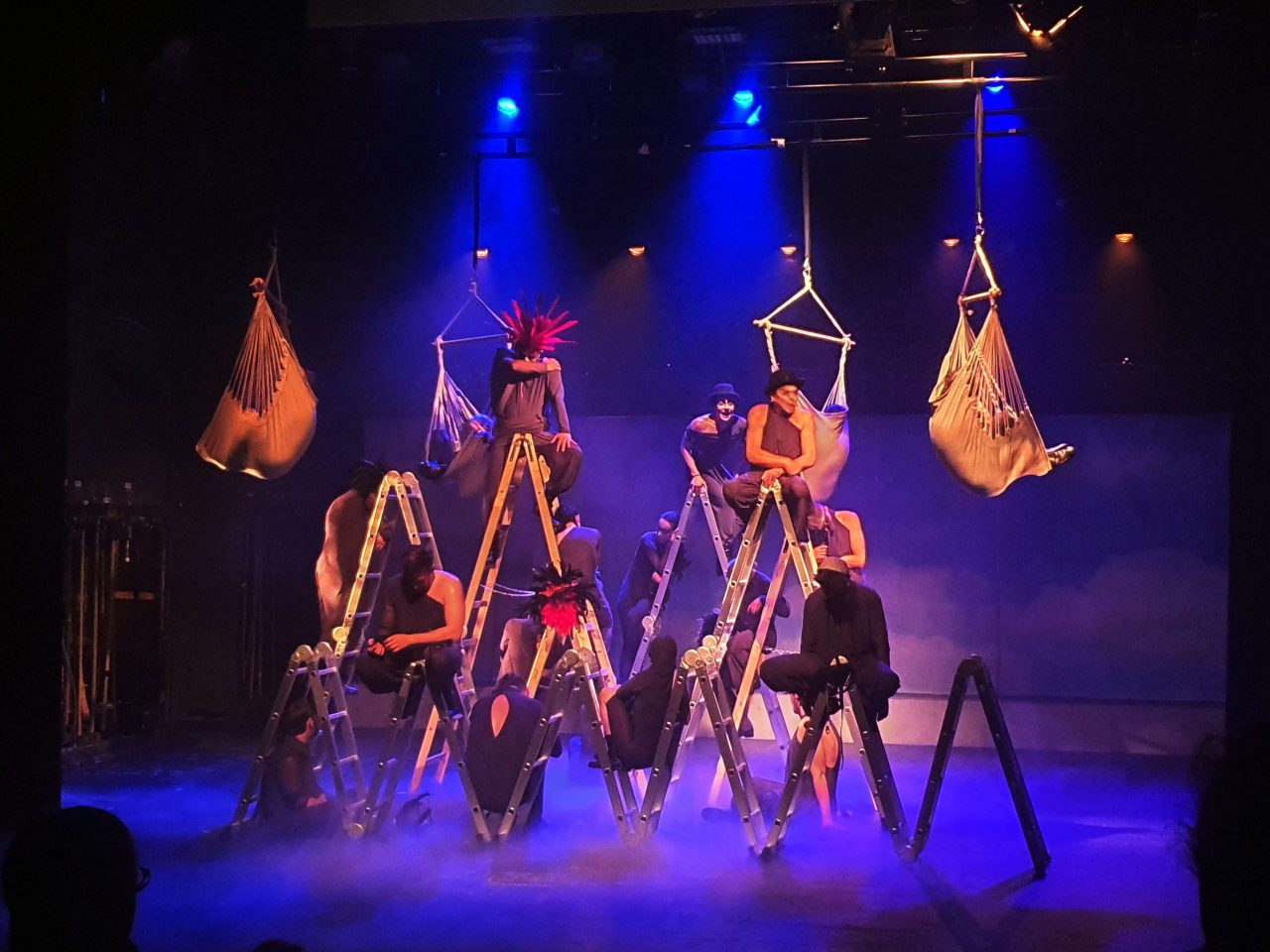
One of the best plays I have seen in recent years, the play starts from Aristophanes’ comedy “The Birds”, combining elements of contemporary theatre (reflections on the theatre and the audience, the ‘fourth wall’) with musical and comedy elements, maintaining the original structure as a frame.
“In Aristophanes’ work, “The Birds”, two men exhausted by life lived in an endless war, build together with birds the Cuckoo Castle in the Clouds, the first utopia in the history of art. After 2500 years, we still live in a war that seems to have no end, but only changes its shape and geographical space, we are tired, subjugated and dreaming of our utopia. What will happen? Is it possible to build after all this a world where we are all equal, where there is no war, no fights? And if so, why can’t we make it happen?” [8]
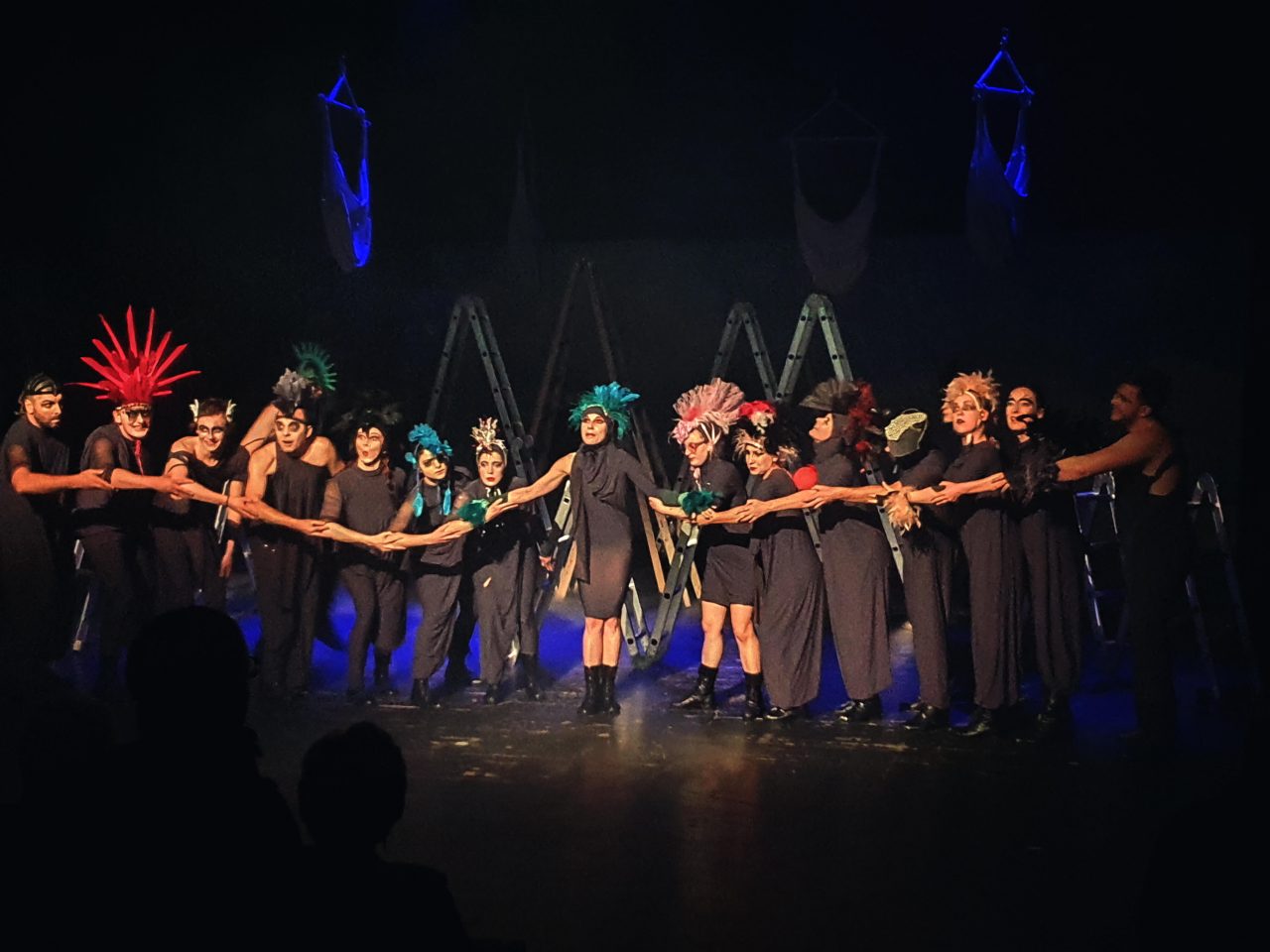
Indeed, in a world of suffering, conflict, worries and social-economic pressures, utopias play an essential escapist role, whether we are talking about traditional-religious utopias or utopias of a new-age spirituality or scientific-social ones. But these only ultimately distract from the whole, from the understanding that even if we don’t want to, we are part of a whole, we are an inside of a larger outside, and even if, for a limited time, we can live in isolation, this will ultimately prove to be an illusion. Sooner or later, someone will interfere with our clean and quiet bubble, to convince us of something, sell us something, attack us or ask for our help and protection. How will we defend ourselves and how can we defend others? Whom do we welcome inside and who do we leave outside, if, anyway, this separation is illusionary?
—
[1] Mignolo Walter, „Dezobediența epistemică”, p.77
[2] Reference to Mircea Nicolae’s work “mă gândesc la ea mereu” – “I’m always thinking of her”
[3] Reference to Mircea Nicolae’s work “de unul singur” – a painted sign placed somewhere in Venice, during the Biennale
[4] Reference to Lucian Boia and Vintilă Mihăilescu exchange of ideas, with the former titling his book in a self-othering manner „Why is Romania otherwise?”, whereas the later inviting several writers and sociologists to co-create a „Why is Romania like this?”; the wordplay is untranslatable – „altfel” / „astfel”
[5] Curatorial text signed by the team of Salonul de Proiecte, for „Mircea Nicolae – Small Things, Precious Things” – 17 February – 23 April
[6] Ionuț Cioană finally chose to leave this world in 2022
[7] The curatorial texts of Cosmin Costinaș and Viktor Neumann are available here https://www.cathedralofthebody.com/en
[8] Kokan Mladenovic for TimiPlus.ro
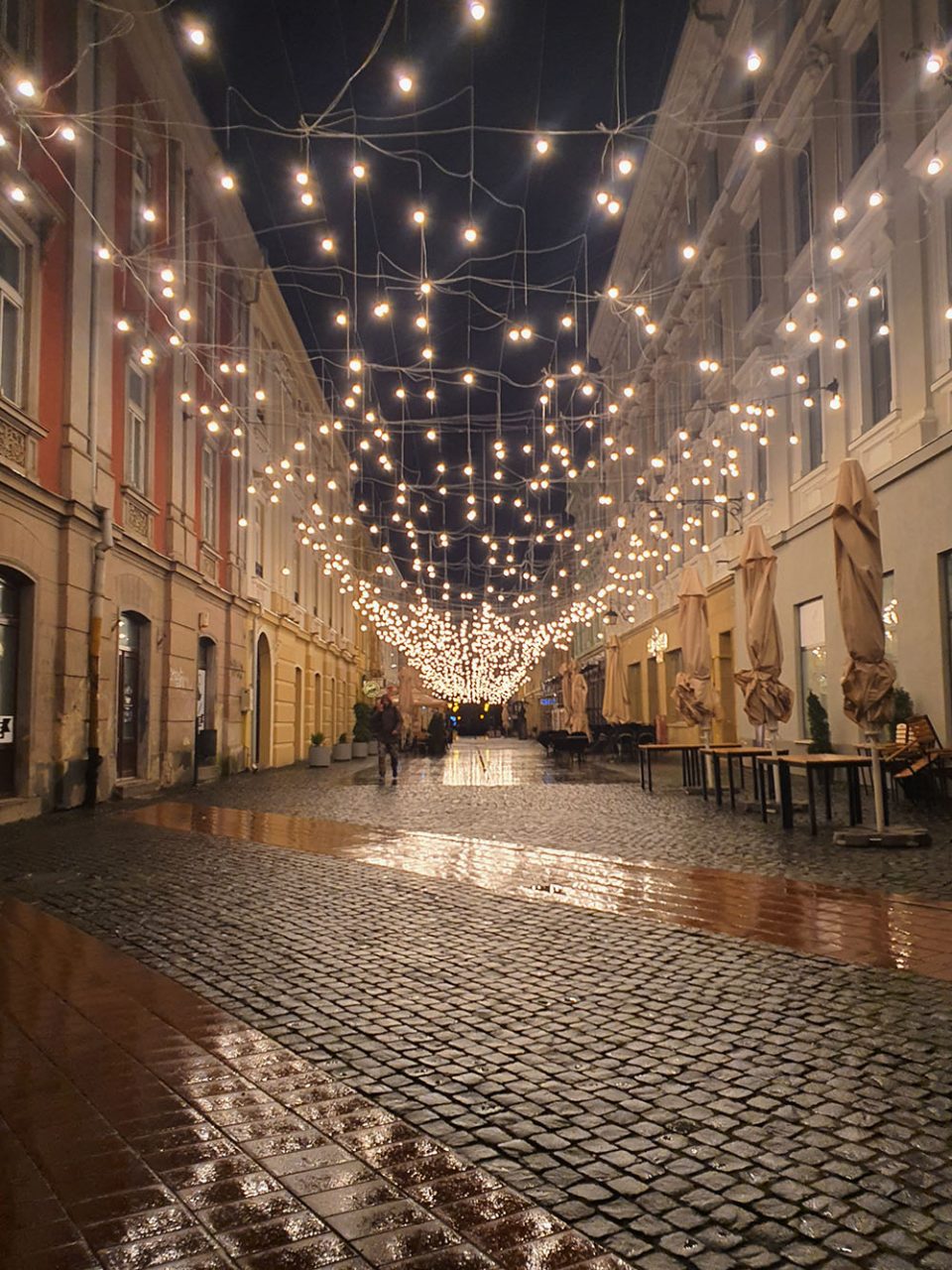
Original version published in Romanian, for Revista 22.


